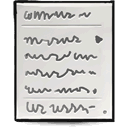Polish Team Chess Championship
The concept of team chess championship rose in the Silesian Chess Federation in late 1920s. There were two events held before WWII - in 1929 and 1934 where six or eight city teams respectively took part. Yet strongest Polish players Rubinstein, Tartakower and the likes did not participate. Warsaw won on both occasions.
The first post-war championship was held in 1946, again as the tournament for cities & regions. The city of Łódź, the strongest chess centre in post-war Poland, won the first two editions while 1948 was taken by Cracow. The tournament of minor importance was held in 1949 when clubs were allowed to participate but not the cities. Yet the strongest players (masters) did not participate because were expected to play in a traditional city tournament, which ultimately did not take place.
| Sport societies 1949-1957 |
 The Sport Societies structure was based on Soviet model. In January 1949 nine societies were created, each one under patronage of respective industry branch: Railway, Mining, Construction, Textiles, Chemistry, Metalworkers, Foodstruff, Unionist as well as Military and Militia units. Some were later re-formed. Former sports clubs were forced to dissolve. The Societies were finally put under liquidation along with the political thaw in Poland in late 1956. The Sport Societies structure was based on Soviet model. In January 1949 nine societies were created, each one under patronage of respective industry branch: Railway, Mining, Construction, Textiles, Chemistry, Metalworkers, Foodstruff, Unionist as well as Military and Militia units. Some were later re-formed. Former sports clubs were forced to dissolve. The Societies were finally put under liquidation along with the political thaw in Poland in late 1956. |
|
The gloomy period of Stalinist era was aimed at, fortunately unsuccessful to the large extent, reforming the very basic structure of chess life in Poland. Format for 1950 championship was all-season league (like in football, where one leg in played every weekend) and that was the only season to end on the following year. This was also the first and until 1970 the only time where the second league was part of the structure. Promoted teams had not yet been allowed to play in the first league, since the system was re-booted again. The national champion for that year was Kolejarz Krakow. The system of play varied a bit in 1952 and 1953, with the semifinals following regional preliminaries and the four team final group. Kolejarz Warsaw and Ogniwo Warsaw won. Ogniwo's final score of 13/24, which is a mere 54.2%, has until today been the lowest percentage result obtained ever by the winners. In 1954 the final group was expanded to 8 teams (two were promoted from each of four semi-finals), yet it forever became tangible stamp of Stallinist philosophy in sports as checkers (draughts) were played on 10th board (the level of play was really poor, by the way). In 1955 the final was again extended up to 12 teams. AZS Gliwice won, yet only because the final order was decided by match points. Had it bee game points like before, they would have finished third. The all-season league system was adopted again in 1956 and had been used for four years. Top eight from previous championship and the four winners of semifinals were allowed to play in the 12-team final group. There was no dominant team those times and the titles were taken by Army House Warsaw, KKSz (f. Ogniwo) Cracow, Start Katowice and Polonia (f. Kolejarz) Warsaw.
The classical system (where there is one big event instead of weekly matchdays) was restored in 1960. Some disadvantages of the revoked format were stressed - higher costs and travel difficulties. Legion Warsaw dominated the 1960s - they won in 1960, 1961 (clear 11 wins), 1963, 1964. Only in 1962 the title went to the oldest Polish chess club KKSz Krakow (est. 1893), mostly due to their 7-1 victory over runners-up Start Katowice. In 1964 the three-stage format (preliminaries, semifinals, final) was used for the last time. Legion easily won in a six team final group. In 1965 Start Łódź scored their outright (and sole) win. Only top half of the 12 team league earned automatic qualification for the next tournament, the rest were set for qualifying phase. Champions Start Łódź were dethroned in 1966 by a rising team of Start Lublin. Legion took yet another title in 1967 only to be replaced by a neighbouring unit Maraton on the following year. Maraton were based on players transferred from Polonia, which dissolved its chess team in 1959. In 1970 the all-national second league was created and the classical relegation/promotion system between the first and the second league was introduced. Legion won on that year and the unlucky teams to face first ever relegation were Anilana Łódź and Avia Świdnik. An interesting statistical oddity: the final order was decided by game points, yet a team to score most match points (16) were Hetman Wrocław, who finished sixth, while fifth placed Start Łódź scored as low as 9 match points.
The league system has been in use until today (with exception of 1990 and 1991). Until 1989 results from junior league accounted for overall score. The decade of 1970s saw dominance of Maraton as they won seven championships, including a record strak of five wins in a row (1973-1977). Key players were Schmidt, Sznapik, Grąbczewski, Witkowski and the likes. Only in 1971 the title went to Start Lublin, who edged out Legion by virtue of points transferred from junior league. Maraton were quite lucky in 1976 to take yet another title, even though they lost as much as four matches out of 11, something that never happened to the champions, neither before, nor after. Polonia Warsaw emerged back as a league team, manifesting decent form in their first years of come-back. Łączność Bydgoszcz scored their only win in 1978 (they were led by Pokojowczyk and Maciejewski). Another statistical fact - Legion won silver although they won 5 matches and lost 5. Start Lublin were relegated despite beating gold and silver medallists in direct encounters. Start Katowice were another team to lose pace. Avia Świdink were rising side thanks to the financial support of their sponsor.
1980s faced serious economic collapse in Poland. This strongly affected the financial background for chess too. There was no dominator throughout this decade. Pocztowiec Poznań won the title in 1985 and 1988, yet managed to suffer relegation (and then were back promoted) in-between. In 1980 Legion outpaced Avia by courtesy of junior achievement. Legion were unable to hold the title out of bad loss v Avia 1½-4½ bo be handsomely passed by Maraton. Once again Avia adult team proved strongest yet were unable to make up for lost ground from junior league. Fortunately, third time proved lucky in 1982 for Avia when the team was led by backbone trio Hawełko, Księski nad Szymczak and supported by Mr and Mrs Pytel. Marathon won again in 1983 edging out Skra Częstochowa. Both teams avoided match loss and Maraton won the title by virtue of match point count. In 1986, surprisingly, incumbent champions Pocztowiec were relegated even though they won 50% possible match points. Other losers were Maraton, multiple time winners from previous years. Lech, another leading side, were in a tightest of corners only to avoid relegation thanks to beating newly crowned champions Legion. The same team of Lech, based on the same set of players won the league on the following year, however. All three medallists from 1988 crossed the line with the same number of game points and were classified by numer of points scored by adults. The last edition in the old political and economical reality took place in late 1989. Legion won, ahead of Kolejarz Katowice and Lech Poznań. Symbolically, all these clubs ceased to exist at professional level soon.
The fall of comminism and market reforms in Poland brought major changes all around. Most traditional chess centers disappeared or were seriously weakened, while there were many rising clubs, with dynamic leaders and sound financial background. The 1990s were absolutely dominated by Polonia Warszawa run by Mr and Mrs Macieja and Stilon Gorzów chaired by Mr Tołkacz with ex-Soviet GM Krasenkov on top board. The league system was abandoned in 1990 and the seven round Swiss, followed by three rounds of play-offs, was adopted. With the participation of 33 teams BBTS Bielsko-Biała won beating Piast Słupsk 3½-2½ in the only Grand Finale in the history of Polish league (the only year when play-offs decided the medals). The Swiss system was kept for 1991 tournament and Stilon Gorzów took their first time championship. The Swiss system was then abandoned, and the top 12 teams qualified to the reinstalled first league. Miedź Legnica were the 1992 champions while multiple medallists from the past Kojelarz Katowice and Legion Warsaw left the top level forever. Throughout the years 1993-98 Stilon Gorzów took five titles out of six possible (only exception: Polonia in 1996) yet they narrowly edged Polonia on most of these occasions. GM Krasenkov transferred to Polonia in 1999 and together with group of young, progressing GMs like Macieja, Soćko, Kempiński or Markowski they formed an unbeaten dream team to win on eight consecutiove occasions (1999-2006). Parallel with it Polonia were five times runners-up in the European Club Cup. Polonia were even able to win bronze medal with their reserve team in 2004.
It was only in 2007 when the rising power HetMaN Szopienice stepped into the breach and took the title. Symbolically, they scored a thumping 5-1 win over the up-to-date dominators in the first round of the championship. The Silesian team defended the title in 2008, yet not without problems. In 2009 HetMan were missing their top player GM Navara and so the title went back to Polonia. In 2010 Navara was back and so was the cup for HetMan. Mr and Mrs Soćko contributed mostly to the success. Polonia finised only in fourth and missed the podium for the first time since 1994. Polonia Wrocław were new revelation as they managed to build a team of strong and perspective players (Wojtaszek, Bartel, Świercz). It has to be noted that silver medals went to the folk club Pasjonat Dankowice, even though there were actually no amateur players in their line-up. 2011 and 2012 saw another titles for Polonia. In 2012 HetMan were in the lead and only managed to draw on the two final rounds to be passed by Polonia by a fraction.
It has to be noted that in 2002 the highest tier was renamed from its traditional brand first league to Ekstraliga while second tier was named first league. Number of teams playing in the first league was reduced from two groups of 30 teams down to one group of ten (two promoted, two relegated). There was a third central level introduced (second league) where winners of regional competitions are allowed, as well as other teams to meet certain criteria. Since 2011, as part of the experiment, the Ekstraliga takes place in three sessions - each one is played in another city within a few weeks, there are three rounds played over the weekend.
Winners 1929-2013: 14x Polonia Warszawa, 12x Legion Warszawa, 10x Maraton Warszawa, 6x Stilon Gorzów, 4x HetMaN Szopienice, 3x KKSz Kraków (once as KKSz-Cracovia), 2x Start Lublin, 2x AZS Gliwice, 2x m.Łódź, 2x Pocztowiec Poznań, 2x m.Warszawa, 1x Start Katowice, 1x BBTS Bielsko-Biała, 1x Avia Świdnik, 1x Start Łódź, 1x m.Kraków, 1x Olsza Kraków, 1x Lech Poznań, 1x Miedź Legnica, 1x Łączność Bydgoszcz, 1x Ogniwo Warszawa
 English version |
English version |  Wersja polska ]
Wersja polska ]


